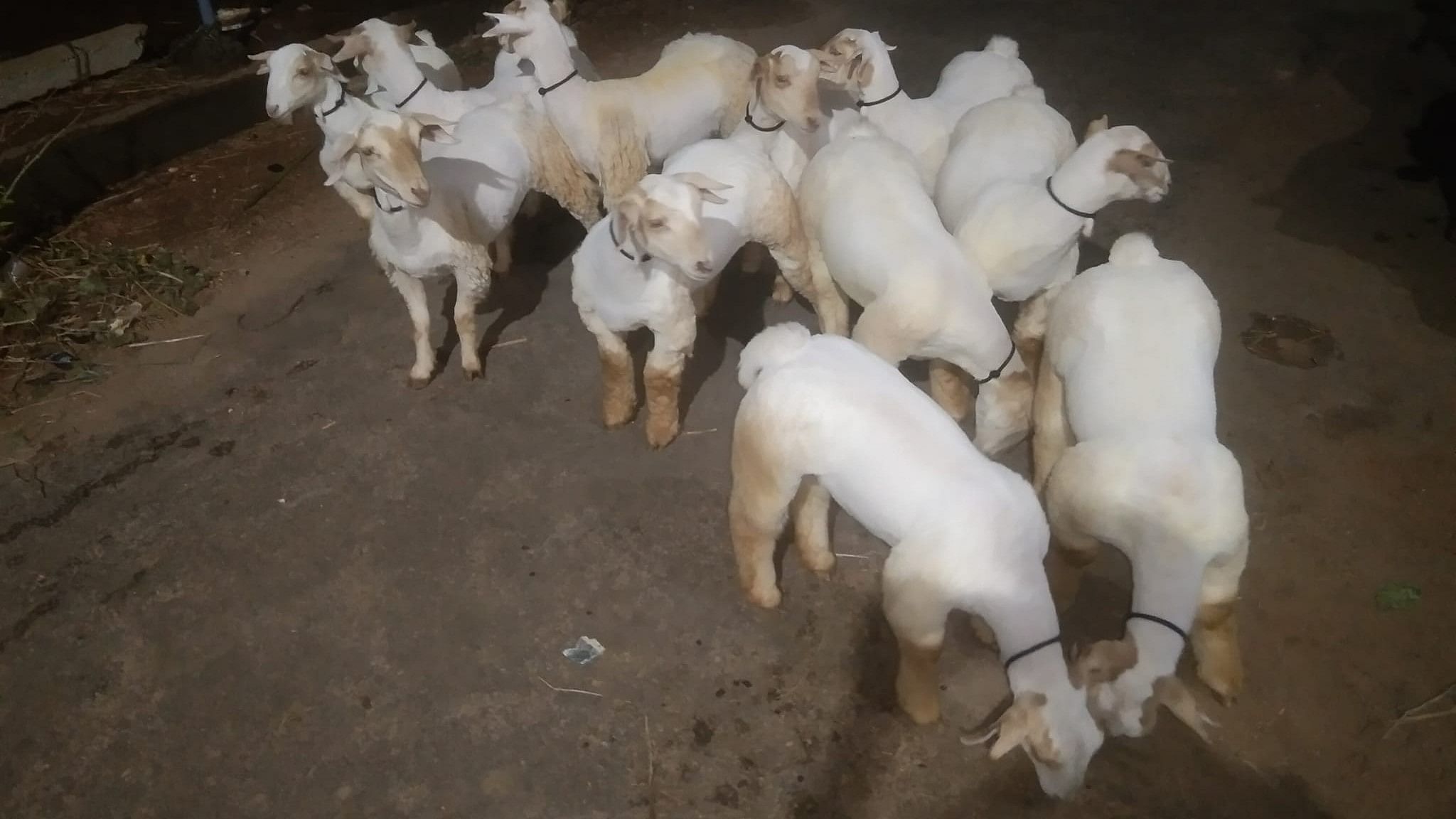
Rams at Bandur Sheep Breeding Centre in Dhanagur of Malavalli taluk, Mandya district.
DH Photo
Mysuru: Bandur sheep of Malavalli taluk is much talked about, some times mistaken for Bannur and mispronounced. However, it is not registered in the name of Bandur, under National Bureau of Animal Genetic Resources (NBAGR) of the Indian Council of Agricultural Research (ICAR).
NBAGR has listed 44 breeds of sheep and three of them are from Karnataka – Bellary, Hassan and Mandya.
Bandur, that is in great demand, is not in the list. But, Bandur Sheep Breeding Centre in Dhanagur of Malavalli taluk, under Karnataka Sheep and Wool Development Corporation (KSWDC), is involved in conservation and development of the Bandur breed, since 1965.
Marbling effect to mutton
As per the manual of NBAGR, published in 2005, Bandur is a variant of Mandya breed. It states: “Mandya sheep are small in size and are found in the southern parts of Karnataka. Bandur strain of Mandya breed is known for its meaty conformation and meat quality, with intra-muscular fat, giving a marbling effect to the mutton”.
However, Dr P Ramesh, head of the centre, said, Mandya breed, mentioned in the manual, itself is the Bandur breed.
Bandur sheep breeding since 1965
Dr Ramesh, also Deputy Director from Animal Husbandry and Veterinary department, said, the centre started functioning under the department in 1965, on 600 acres of land leased from the Forest department. “It came under Karnataka Sheep Development Board in 1975. Since 2005, it is functioning under KSWDC. The centre and Forest department conducted a survey and earmarked 336 acres of land, to be permanently allocated to the centre,” he said.
Before the Covid-19 pandemic, residential training camps were held for around eight batches of farmers annually, on breeding Bandur sheep.
Only 1 ram to farmers
Dr Ramesh said, at present, there are 450 Bandur sheep in the centre - 18 rams and 432 eves. “In the year 2021-22, 90 rams were given to beneficiaries. It was 78 in 2022-23, 90 in 2023-24 and 12 till June 10, this financial year. Each beneficiary gets only one ram, for breeding and he/she has to give an undertaking that the ram will be used only for breeding, till it is fertile,” he said.
“When Bandur ram is used, to cross with a nati eve of Mandya, the first generation will be almost 50% Bandur. The second generation will be around 75% Bandur. By third generation, around 90% will be Bandur. It increases third generation onwards. Anything above 93.5% Bandur characteristics is considered as pure Bandur breed,” Dr Ramesh said.
Artificial insemination to be introduced in six months
Dr P Ramesh, head of Bandur Sheep Breeding Centre in Dhanagur of Malavalli taluk, said, artificial insemination (AI) for breeding of Bandur sheep will be introduced in six months.
He said, a laboratory and equipment are ready in a new building on the premises of the centre. “We are waiting for approval to recruit skilled staff. The sperms of Bandur sheep will be used for breeding on a larger scale. Already, artificial insemination is done for various breeds of cattle and sheep. So far, it was not experimented in the Bandur breed,” he said.